Engineering and Inventions
Crazy Gears
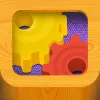
Highly applicable STEM-themed free play; easy appeal for wide audience
Bottom Line: A clear, simple, and fun introduction to science and engineering topics that may otherwise feel unapproachable for some kids.
Hero Elementary
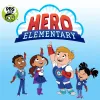
Cute science and engineering activities can fill gaps, feed curiosity
Bottom Line: These games can be a great supplement to a science class, though each individual activity works best when played in a single session.
Simple Machines by Tinybop
Excellent elementary NGSS engineering practices embedded in fun games
Bottom Line: Fun gameplay lets kids explore important physics concepts in a solid standards-aligned context.
The Robot Factory by Tinybop

Improve designs, collect favorites in robot creation sandbox
Bottom Line: A well-made and enjoyable STEM app that leverages what's great about play -- experimentation -- to spark engineering interest.
Inventioneers Full Version
Budding engineers create design solutions with fun physics puzzler
Bottom Line: A fun, engaging way to boost critical-thinking and problem-solving skills while learning about important science and engineering practices.
Gizmos & Gadgets
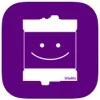
Top-notch tool empowers kids to invent, build, and control wirelessly
Bottom Line: Easy-to-use, versatile electronic invention set that works wirelessly with your hand-held device.
SAM Labs
Kids use block code and wireless blocks to program, design, and create
Bottom Line: With some perseverance, it's a great fit for PBL and STEAM, helping students learn programming skills and engineering concepts through invention.
Trainyard
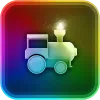
Stump students with innovative train-routing puzzler
Bottom Line: Superb combination of logic, real-world learning, and train play.
World of Goo

Stellar physics builder with wiggly, animated goo balls
Bottom Line: A fascinating fantasy world and constant puzzle challenge pull kids into learning about building structures and geometry.
Coding and Robotics
Codeable Crafts
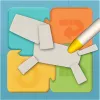
Animate stories with accessible drawing tools and coding blocks
Bottom Line: Kids get a simple peek at computer programming principles by animating stories using their own creations.
Blockly for Dash & Dot Robots
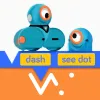
Adorable robots teach hands-on coding skills
Bottom Line: You can program robots with code blocks, with plenty of creative options and lots of fun.
Evo by Ozobot
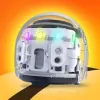
Versatile mini robot tailor-made for teaching coding
Bottom Line: Evo encourages students to be creative, emphasizing that coding is a tool in your pocket, not the end game.
Sphero Edu

Cool robots and creative play make programming irresistible
Bottom Line: Hub for Sphero robots draws crafty kids who love making into coding, and it empowers them to be collaborators.
Swift Playgrounds
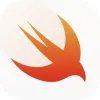
Brilliantly designed iOS coding app great for newbies or pros
Bottom Line: If you have iPads or Macs, this is an inspired choice for learning how to create and tweak code.
Cargo-Bot
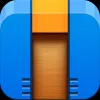
Challenging game helps kids learn to think like programmers
Bottom Line: Cargo-Bot is a simple concept that packs a challenging punch and teaches valuable programming skills.
Science and Math
Bugs and Bubbles

Fascinating graphics engage as kids practice pre-reading, STEM skills
Bottom Line: Great bang for the buck with all the content and stages included.
Nico & Nor Coconut Star
Early education force and motion app ramps up student learning
Bottom Line: Coconut Star, along with its companion app, are great additions to any pre-K–1 physical science unit.
Osmo Tangram
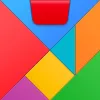
Fun hybrid puzzles with excellent classroom supports
Bottom Line: Classic puzzler combines toys with digital play to engage and teach all ages.
Math Makers
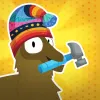
Charming leveled puzzler slyly mixes fun with logic, essential math
Bottom Line: These puzzles are a really fun approach to developing an intuitive sense of important math concepts, particularly for kids who feel that math is boring or inaccessible.
Shifu Plugo

Augmented reality app has appealing STEM puzzles, room to grow
Bottom Line: Shifu Plugo is a good AR product that, with continued development, could be great for collaborative learning.
Playground Physics

Fun video app lets students track motion to explore physics concepts
Bottom Line: This is a cheap way to get students out of their chairs to make physics real and tangible, empowering learners and encouraging curiosity.
Light & Color by Tinybop
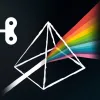
Open-ended scientific exploration shines best with offline scaffolding
Bottom Line: Free-play science-based exploration works best for students who love to discover things on their own with little guidance; others will need scaffolding.
DIY Nano
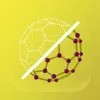
Turn kids into budding nanoscientists who explore the tiniest things
Bottom Line: Scientist-reviewed videos and activities relate nanoscience to everyday life.
Volumize
Approximate photos of real-world objects with virtual 3-D shapes
Bottom Line: A quick way to make solids more tangible, especially when paired with good lesson plans that get students working directly with formulas.
Lab4Physics

Bring physics to life using lab sensors built right into your smartphone
Bottom Line: Use your smartphone to gather data and study speed, gravity, waves, and other physics concepts.
The PocketLab

Gather and analyze live data anywhere
Bottom Line: A science sensor that pairs with your device to gather and analyze data is perfect for inquiry-based learning.
Arduino Science Journal
Turn your phone into a lab sensor to collect and analyze data
Bottom Line: Science Journal does a good job recording real-time motion, sound, and light data using phones.











